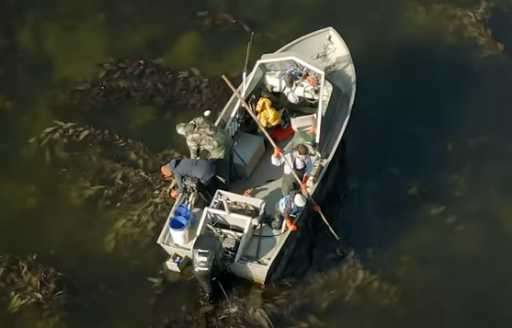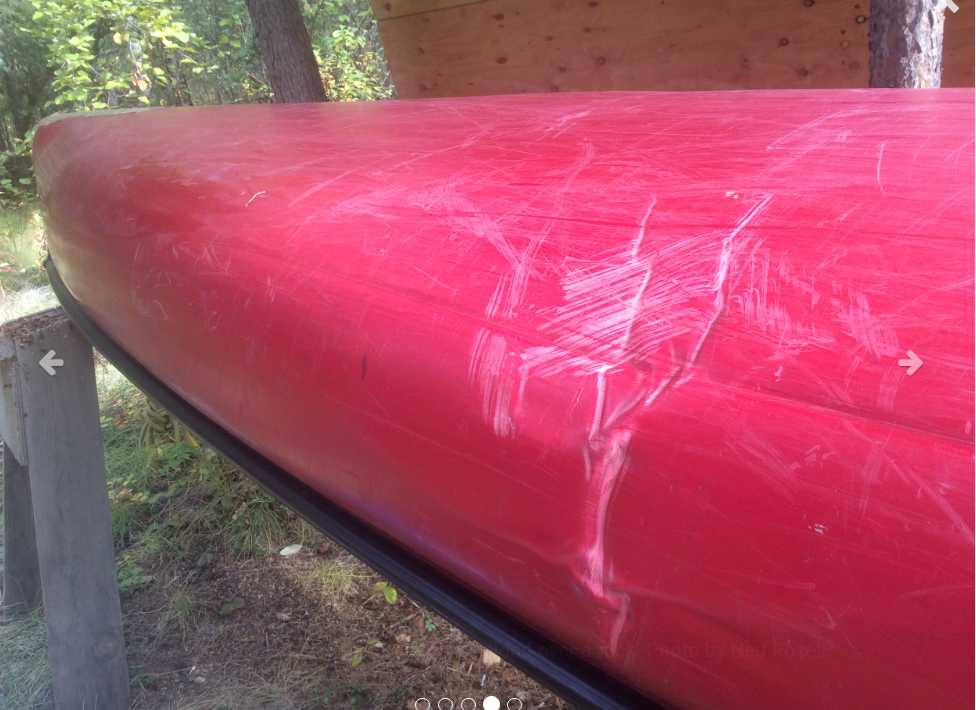JUNEAU, Alaska – Sealaska Corporation has found an ancient, partially carved Haida canoe on forested land it owns near the Organized Village of Kasaan on Prince of Wales Island.
A surveyor working for Sealaska Timber Corporation (STC) spotted the 33-foot-11-inch canoe last winter undera heavy layer of moss. Steps were taken immediately by STC to protect the area from the scheduled selective harvest in order for a full investigation to take place. After the spring snow-melt, Sealaska leaders and tribal members from Kasaan visited the canoe and observed that at least five cedars at the site had been hand-harvested using traditional, non-commercial tools.
“Other abandoned canoes have been found in Southeast Alaska, but it is rare to find canoes crafted with traditional tools,” said Dr. Rosita Worl, president of the Sealaska Heritage Institute.
Daniel Monteith, an anthropology professor at the University of Alaska Southeast, surveyed the site for Sealaska. Evidence was found, Worl said, that traditional tools, rather than modern saws, were used to cut the trees and hollow the canoe. The carving of the canoe was nearly complete, but it had not yet been steamed, a process used to give the craft its final shape. Another log that apparently split when it was harvested also lies at the site, and segments of its wood appear to have been salvaged for other uses.
Worl said the canoe could be partially dated by a known historical fact—that the present-day Village of Kasaan was founded in 1900, at which time tribal members had access to commercial tools. And STC President and CEO Wade Zammit said that the cedar forest that has grown up around the canoe site is around 500 years old.
Clarence Jackson, a Sealaska board member and chairman of the Sealaska Heritage Institute’s Council of Traditional Scholars, said, “The Sealaska Board of Directors views this Haida canoe as a tangible tie to Haida ancestors, who made this canoe and who left their footprints on the land.”
Discovery of the canoe reinforces Sealaska’s decision to include historic and sacred sites as part of its land legislation (H.R.1408 and S.730) that is now before Congress.
“We believe sites like this one will be better protected and preserved under Alaska Native ownership,” Worl said.
For now Sealaska is keeping the canoe site private and secure. The Organized Village of Kasaan will make decisions about the care and use of the canoe and site.
Sealaska will work with Kasaan. Worl hopes that the canoe can be replicated so modern Haida canoe-makers can study its pre-commercial techniques. In the longer term, the site could become an educational forum where future carvers could make monumental art such as canoes and totems, she said.
“The canoe symbolically unites past, present and future,” Worl said. “We are taught to honor our ancestors by ensuring that their knowledge is taught to future generations.
”Cultural and historic items are highly valued by Sealaska Corporation, and engineers and field personnel of the corporation’s subsidiary, Sealaska Timber Corporation, are trained to recognize potential cultural resources, said Sealaska Executive Vice President Rick Harris.
“They are instructed to immediately secure the area, stop any activities that may negatively affect the cultural resource, and contact Sealaska Heritage Institute, which oversees these matters,” Harris said. “We are proud that this is what happened at this important site.”






